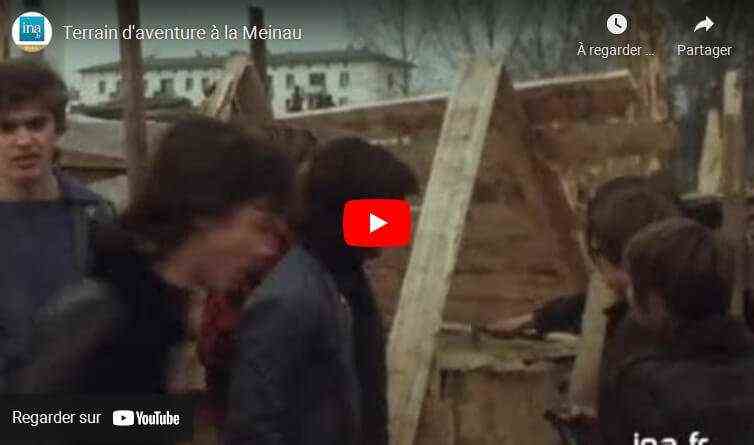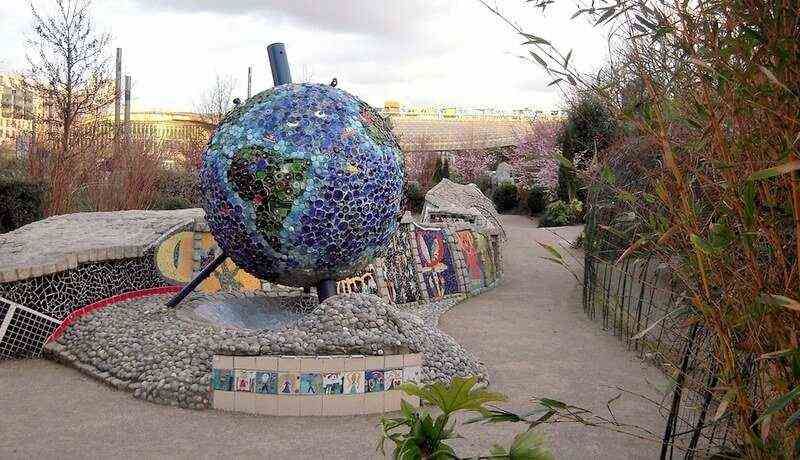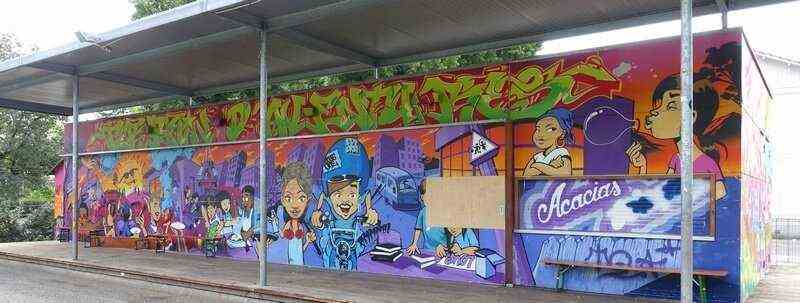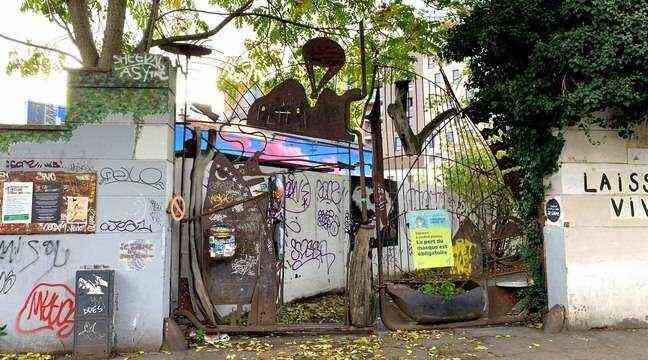Invented almost a century ago in Denmark, adventure fields are spaces for free activities for children, which allow them to reclaim public space. In recent years, creation projects around this concept have multiplied in France. How to analyze this renewed interest? Do these fields constitute fields of experimentation and education of a new kind?
Their story begins in the early 1930s, spurred on by Carl Theodor Sørensen (1893-1979). This Danish landscape architect is thinking about a new form of space, where children could give free rein to their inventiveness, try new experiences, and where the footprint of adults would be minimal. Its objective is to allow them to imagine and build their own universe.
At Marc Sangnier park in Rennes, children can freely build wooden cabins © J. Gicquel / 20 Minutes
In 1943, the first adventure playground was created in Emdrup, on the outskirts of Copenhagen. But it is in England that the movement is gaining momentum, in a country where the adventure playground will be defined in opposition to the square, this standardized urban playground.
In the 1950s, everything accelerated on the European continent (Denmark, Sweden, Switzerland, Germany, France). Faced with increasing urban densification, adventure fields are flourishing at the foot of buildings under construction.
Educational utopias
The initiatives took shape after May 1968 on the basis of educational and political utopias. The wastelands of the suburbs are converted into spaces for games and discoveries. The phenomenon is then found in the United States at Berkeley, from 1979 and in Japan.
In France, projects are developing as new spaces for environmental struggles. The adventure playground becomes the place of anti-authoritarian educational practices, new collective forms of life and the appropriation of urban wasteland. In an article from World signed Katie Breen and published in 1976, Dominique d’Allaines-Margot recounts her experience as an animator in the new city of
Bouffémont in the Val-d’Oise:
“The adventure playground offers the child a role, an attitude that is quite different from what is usually imposed on him. At school, she is asked to recite her lessons. At home, he must be wise… In the public garden, the play structures are made for climbing, for jumping, and they always elicit certain gestures. On the adventure playground, the child is told: “Anything goes. But nothing specific is expected of him. “
The adventure fields of the 1970s and 1980s were popular education spaces, like that of Bellevue, in Nantes, or
the Meinau, in the Strasbourg suburbs, where the children make the games themselves using recycled materials and tools made available to them by educators who guide and support them.
 VIDEO : Report on the playground for children in the Meinau district (INA Styles, 1975)
VIDEO : Report on the playground for children in the Meinau district (INA Styles, 1975)
Precarious and subject to real estate pressure, most experiences are struggling to be sustained. But the idea continues on its way, with spaces of freedom such as the Petits Pierrots adventure playground, created in 1988 in the 20th arrondissement of Paris. Today there are approximately more than 1000 adventure fields in the world.
A new era
In recent years, initiatives have been developing again in France, in line with the recent context of revegetation of urban spaces. Projects are spreading in Île-de-France (Villiers-le-Bel, Rambouillet, Bagnolet), in Pays-de-la-Loire (Nantes, Cholet, Angers, Saint-Nazaire, Orvault) but also in Reims, Bordeaux, Marseille and, in the summer of 2021, in Montpellier.
Often initiated and supported by CEMEA (training centers for active education methods), all these adventure fields perpetuate this history and these struggles of common spaces within the city with today specific objectives: to rethink the place of the child in the city, and promote its autonomy.
 Les Halles adventure park (Paris) © Patrick Janicek / Fickr, CC BY-SA
Les Halles adventure park (Paris) © Patrick Janicek / Fickr, CC BY-SA
Creating a place for children, designed by them, is an innovative vision of education and urban space. Do popular education projects not thus make it possible to rethink the links between inhabitants and urban policies?
The adventure playground has become an object of research with the Tapla network (Adventure grounds of the past / for the future), initiated by Baptiste Besse-Patin, Aurélien Ramos, Gilles Raveneau and Clothilde Roullier as an international, multidisciplinary and open network that studies the heritage of adventure fields and their perspectives .
Free activities
From recent works show the importance of free activities in the development of children. These promote an integral education, taking into account the different facets of each person’s personality: intellectual, manual, bodily and emotional.
Rather than offering structured activities, the adventure fields favor this approach, by focusing on the needs and desires of children, their curiosity to build, build, garden, take care of animals or simply observe their environment.
 Terrain d’Aventures Acacias-Jonction: free reception area for children from 8 years old, managed by the Maison de quartier des Acacias, located between the Vernets swimming pool and the Queue-d’Arve sports center, near the ‘Arve © MHM55 / Wikimedia, CC BY-SA 4.0
Terrain d’Aventures Acacias-Jonction: free reception area for children from 8 years old, managed by the Maison de quartier des Acacias, located between the Vernets swimming pool and the Queue-d’Arve sports center, near the ‘Arve © MHM55 / Wikimedia, CC BY-SA 4.0
There is no initial desire for formal learning and this freedom involves taking risks. The adventure ground is thus conducive to the discovery of autonomy. Getting to know yourself better, understanding others better and the need to be with others are building blocks of this individual and collective autonomy.
Assessing the risks you take is essential to children’s learning, development and health. In these areas, they will experience their own limits, cooperate, exchange, share, get involved.
To perpetuate these experiences and participate in their spin-off, a charter for adventure playgrounds should be considered. This would not only make it possible to better define their social and educational intentions – different from those of theplayground – but also to establish the convergences and the differences of the projects.
This analysis was written by Sylvain Wagnon, university professor in educational sciences at the University of Montpellier, Delphine Patry, doctor in educational sciences – ATER at the University of Caen-Normandie and Mathieu Depoil, doctoral student in Educational Science at Liderf – University of Montpellier, Paul Valéry University – Montpellier III.
This article was written in collaboration with the CEMEA Occitanie team.
The original article was published on the website of The Conversation.


